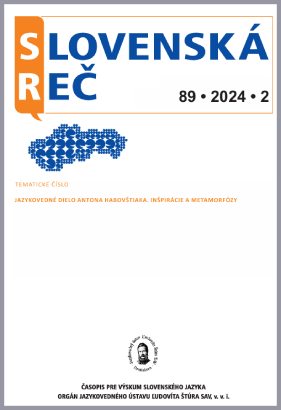
Vklad Antona Habovštiaka k problematike teritoriálnej diferencovanosti slovenských nárečí a ich klasifikácie
The article presents some models of territorial classification of the Slovak dialectal area, which were created in the course of the development of Slovak linguistics and dialectology. At the same time, it reminds that the differentiation of Slovak dialects has to a large extent the character of a dialectal continuum, therefore territorial classifications are always the result of a certain abstraction and selection of linguistic criteria as well as the consideration of extra-linguistic factors. The first classifications were based almost exclusively on extra-linguistic factors (namely the division of the territory into the old administrative units in the Hungarian Empire). During the development of classifications of Slovak dialects, it is possible to identify a gradual tendency to increase reflection of linguistic data and isoglosses, and extra-linguistic factors served as one of the potential motivations. In this article, special attention is paid to the contribution of A. Habovštiak’s work to the research of dialect differentiation and the basic principles of their classification.
More...

